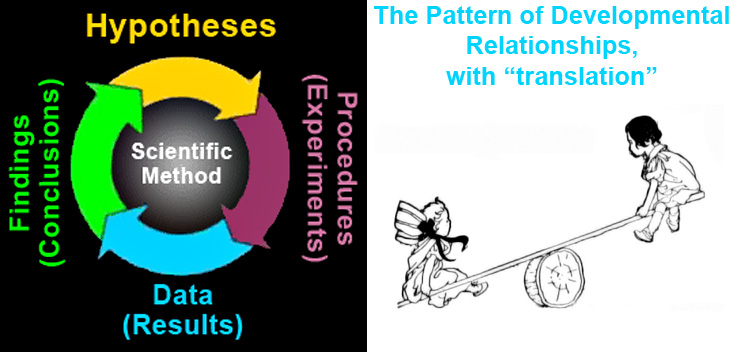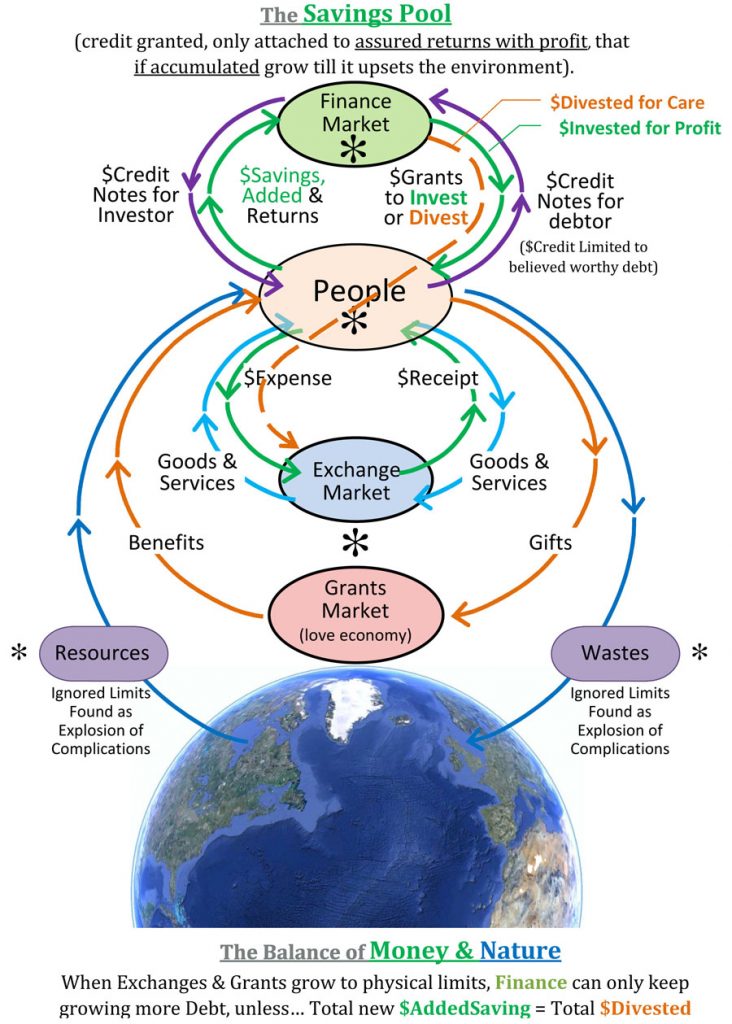The traditional scientific method doesn’t fit our new information world very well, with the rapid emergence of so many new forms of knowledge communities, computational science and commerce, seeming to take over. They are also being built on a foundation of science with major problems unsolved, like an understanding of how complex systems emerge and become unstable. The Edge asked What Scientific Idea Is Ready For Retirement?, and got 174 responses, one of which was Melanie Swan’s answer: “The Scientific Method”. She points persuasively to the differences between the emerging computational approaches to knowledge and the traditional practices of science, and hopes a “multiplicity of future science methods can pull us into a new era of enlightenment just as surely as the traditional scientific method pulled us into modernity.”
There’s a flaw in that, though I generally agree with the hope. Science is still unable to study nature except in abstraction, representing nature as a theory of deterministic calculations. It’s been unable to use them to study 1) our own or nature’s great creativity, or 2) any individual thing or event, in its own natural form. It matters because our old habits of multiplying new forms until they caused trouble is now the foundation on which we’re adding an uncontrolled “Cambrian explosion” of new forms of computational (and often disruptive) knowledge. We also appear to be trusting the future of civilization to them, even as the radiation of old forms further depletes and disrupts the natural world. It’s seems we’re “missing something”.
So, my counter proposal is to open the eyes of science to the study individual natural systems as subjects, not just as abstractions, but to learn directly from them, to create an “object oriented science”. My years of work on that, creating a form of physics for studying individual natural systems, works by raising particularly good questions. For example, all natural systems that develop from a common origin as individuals are found to face a common pattern of life challenges, in part:
“getting started”, “building internal relationships”, “establishing external relationships”, “fitting in”
There are reasons to worry when the foundation for a radiation of new sciences is an “old science” for radiating new forms that make us quite unable to “fit in” on the earth. It makes it likely that the new forms of knowledge instead of correcting that, actually contain the same flaw as the old one. I think a very big part of that comes from science relying on representing nature with equations, that have radically different properties from the subjects that are meant to represent.

A counter proposal…
[first posted to IEET article] Certainly the recent discovery that “the world is complicated” (and both people and nature unusually *inventive*) does expose a deep flaw in the idea that nature follows simple scientific rules and models. That seemed plausible only because some of the simple rules of physics are also so amazingly reliable. Those still exist, and others are to be found most likely, but the question is: “What then do we think of them?”
I think we probably should not throw out the scientific method… particularly just because we’ve been misusing it. The common flaw in our use of science as I see it, and studied since the 1970’s actually, is its “misrepresentation problem”. The world is not a model, and we’ve been treating it that way.
The world is not made of numbers, not made of quantitative relationships. It’s made of organizations of separate things, often found in “improper sets” with the parts of one thing also often taking independent part in others too. It makes things in nature *highly individualistic*, and held together by some kind of “organizational glue” we’ve hardly begun to study. That presents not only a wonderfully interesting “mismatch in VARIETY”, but also several wonderfully interesting “mismatches in KIND” as well. It may not be ‘neat’ but it’s very ‘lifelike’, and opens all sorts of new doors!
So what I think we need to retire is not so much “science” as “the representation of scientific models as nature”. The article points to a number of the big discrepancies that have become too big to ignore, but where does that take us?? One place it takes us back to the age old “million dollar question” of how science is to refer to nature at all. What is it we CAN define that DOES NOT misrepresent what we are studying?? I think a quite simple place to start (and obvious solution once you recover from the shock, I guess) it to treat models not AS nature, but AS “our limits of measurable uncertainty about nature”. Yes, Popper and Bohr with turn in their graves… but models understood as representing upper and lower bounds within which we expect nature to operate, independently, will also be found to be much more useful.
If you actually look closely at natural behaviors you readily see that, that the paths nature takes are always individualized, and we can understand them much better having some information from past events to suggest what to expect. It gives you a straight and clear view of the all-important “discrepancies”. To make use of relieving science of its century (or more) of seriously false thinking, about nature being theory, what you then need are ways for science to refer to nature as “individual phenomena & organizations” to identify the stuff of nature that science studies. In our century or more of trusting abstraction by itself, that’s what I think science has been missing, having a natural object of study.
So, in a fairly direct way I’m calling for an “object oriented science” to correspond to the “object oriented programming” that has become such a big help for giving order to computer coding and the web. My main two tools for that are what I call a “dual paradigm” view (alternating between attention to ‘theory’ and ‘things’), and a “pattern language” view (the emerging scientific method of describing natural organization based on Christopher Alexander’s work).
Alexander’s pattern language is evolving to become a versatile general method for working with ‘recurrent patterns of design’ as ‘whole sets of working relationships’ found in ‘problems’, ‘solutions’ & ‘environments’. My new work describing how these fit together is being presented at the PURPLSOC and PLoP meetings this year, presents a broad picture of the fundamentals, and very worth using to begin the process of recognizing natural design as a working environment. If interested, do searchs for “dual paradigm”, “pattern language” & “Christopher Alexander” both on the web and in this journal.



